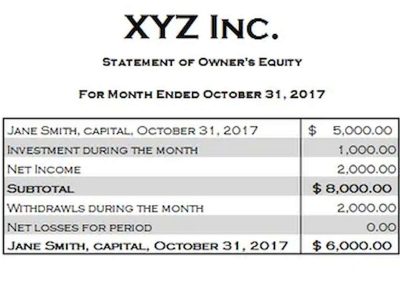
See how HighRadius transforms invoice coding into a streamlined, intelligent workflow. Schedule a personalized demo and discover how we can help you scale AP operations with confidence. Coding varies from one property, team, region, entity, department, company, budget account to another. Until the invoice is keyed and coded in the system, it’s creating a bottleneck and inhibiting the full ROI on your automated workflow system. Despite the promise of AP automation tools, those with complex needs often find Suspense Account shortcomings, particularly in visibility and manual effort. It shows up in your metrics as invoice exceptions—the top AP challenge (53%)—and they still average ~14% of invoices industry-wide.

The Innovative CFO’s Agenda: Driving Efficiency with Accounts Payable Automation
When you add high turnover and a relatively long “time to productivity” to the mix, accounts payable invoice processes can really suffer. Medical billers, for example, use a complex system of procedure codes to bill for medical services. Healthcare providers count on medical billing specialists to translate medical records into procedure codes and enter those codes on medical bills. Invoices that reference a purchase order are typically easier to code because much of the accounting data is already defined at the time of QuickBooks purchase. These invoices follow a structured matching process, allowing for partial or full automation.
Supports better reporting and analysis
It prevents unauthorized coding changes, enforces approval hierarchies, and supports better audit compliance with clearly defined workflows. Switching from manual to automated invoice coding offers more than just time savings — it transforms the way AP teams operate. With automation, finance leaders gain better control, faster processing, and cleaner financial data across every invoice touchpoint.
B2B Payments
Manual coding introduces human error, from mistyped GL codes to selecting the wrong cost center or department. These mistakes result in misclassified transactions, which can distort financial reporting, delay month-end close, and trigger rework during audits. To understand invoice coding more clearly, let’s walk through a simple example of how a typical supplier invoice is coded within an accounts payable system. By moving away from paper invoices and manual coding actions with automated invoice processing, companies can save time, save money, and minimize discrepancies by reducing the risk of human error. Coded invoice data feeds into dashboards and reports that show spend breakdowns by vendor, category, or region. This visibility helps sourcing, procurement, and finance leaders make more informed decisions, uncover cost-saving opportunities, and manage vendor performance.
- This ensures that every expense is recorded in the right category and aligned with internal financial reporting and compliance standards.
- Invoice coding helps track spending by category, department, project, or vendor, giving FP&A and finance teams granular visibility.
- During invoice coding, an AP specialist or property manager enters various account codes to ensure the invoice is paid to the right vendor, from the right expense accounts, by the right property—among other details.
- Companies use GL codes, or general ledger codes, to connect incoming invoices to specific general ledger accounts.
- An invoice code is a structured identifier, such as a GL account number or cost center, used to classify and track expenses in the accounting system.
Now that we’ve covered the basics of invoice coding, let’s take a more detailed look at how it works. As they spend less time on manual work, their job satisfaction increases alongside productivity, opening the door to higher value work, and freeing up your time for your next transformative fintech implementation. By weaving these best practices into the fabric of your AP operations, you’re not just sidestepping potential pitfalls; you’re also paving a smoother, more efficient path forward. Coding invoices demands a detailed review, not just of the document itself but also of its broader context. Explore why HighRadius has been a Digital World Class Vendor for order-to-cash automation software – two years in a row.
It directly impacts financial reporting accuracy, cost allocation, and overall compliance, making it foundational to any AP or finance process. HighRadius uses AI-powered GL coding to automatically assign general ledger codes based on vendor, invoice descriptions, and historical coding patterns. This eliminates the need for manual data entry, reduces classification errors, and ensures every invoice is categorized consistently, improving accuracy and audit readiness. AI-assisted coding uses machine learning algorithms to suggest or auto-fill invoice coding fields based on historical data and vendor behavior.
Accounts Payable Solutions

Each invoice line item is tagged with the appropriate accounting code, which informs the ERP system or accounting software how to record and categorize that transaction. This ensures every dollar spent is correctly allocated for financial tracking, analysis, and reporting. Proper coding involves assigning these numbers to each line item on an invoice during the AP process. Invoices move through the system faster — often in real time — accelerating the overall accounts payable cycle and reducing the risk of late payments.
- Using the correct codes for the right departments or business processes requires manual data entry and a look-up table.
- This eliminates manual calculations, improves accuracy, and provides clearer insights into how expenses are distributed across the organization.
- Discover key trends and strategies for 2025 with finance leaders BC Krishna and Yash Madhusudan in this must-attend webinar on the future of AI, AP automation, and expense management.
- It enables finance and FP&A teams to monitor spending at a more granular level, compare budgets versus actuals, and make better-informed decisions about resource allocation and performance tracking.
- For this reason, an effective audit review program will ensure the accuracy of both revenue and compliance.
- Without a centralized, structured data trail, it becomes difficult to track pending payments, forecast cash flow, or support audit requests.
- Invoice coding can be performed by accounts payable teams, department managers, or automation tools.
Navigating the world of invoice coding can sometimes feel like trying to solve a complex puzzle. This system of coding organizes your financial transactions and makes it possible to properly track expenses, making it more efficient to oversee your financials. Learn how Centime’s straight-through processing eliminates supplier friction, cuts fees, and modernizes card-funded ACH payments. When a company sends a new invoice to a customer, that’s part of the accounts receivable process — the company expects to receive payment. We have access to proprietary technology to assess your critical risk areas and recommend adjustments that can help you mitigate risk, reduce coding errors and address your revenue streams. Invoices that are not linked to a purchase order require more manual effort and judgment.

Automated invoice coding uses rule-based logic or AI to classify and assign financial codes to invoices without manual intervention. Rather than relying on AP teams to manually check for compliance, the software ensures that invoices follow company policies and regulatory requirements while speeding up the coding process. AI-powered invoice coding automatically assigns GL accounts to invoices using machine learning. Instead of requiring AP teams to manually look up and enter codes, the software intelligently applies the correct accounting codes, reducing errors and ensuring consistency across all invoices. Each what is a coding review before invoicing called line item is assigned to a specific general ledger account, such as Office Supplies, IT Services, or Travel Expenses, to ensure accurate classification on the income statement or balance sheet.
Allocate costs more accurately across departments and projects

Despite its importance, invoice coding has been left behind the massive growth in the AP automation, procure-to-pay, and invoice capture solution landscape. Invoice coding is a critical and often time-consuming step in the procure-to-pay process. It’s essential for allocating expenses to the right entities and accounts, and getting the right vendor paid on time. Centime’s cutting-edge AP automation solution delivers an unparalleled coding experience.

Leave a Reply